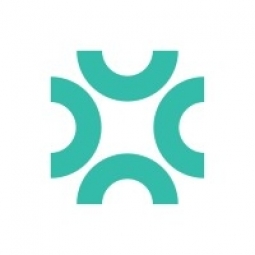Customer Company Size
SME
Region
- America
Country
- United States
Product
- Planning Maestro
- NetSuite
Tech Stack
- ERP
- Budgeting Software
Implementation Scale
- Enterprise-wide Deployment
Impact Metrics
- Productivity Improvements
- Cost Savings
Technology Category
- Functional Applications - Enterprise Resource Planning Systems (ERP)
Applicable Functions
- Business Operation
Use Cases
- Inventory Management
- Demand Planning & Forecasting
Services
- System Integration
- Software Design & Engineering Services
About The Customer
The Wildlife Gallery is the largest tannery for the taxidermy industry in the United States. The organization, which has 145 employees and is based in Blanchard, MI, offers tanning, skinning, trophy room design, and fine woodwork services across six locations in Michigan, Texas, and Alaska. The company prides itself on providing an 'industry-changing experience' by producing exceptional quality and craftsmanship with new and creative ideas, while maintaining the highest level of customer service. The CFO, Nate Walters, has been with the company for over 20 years and has seen a variety of financial tools used in the company, from Excel and QuickBooks to NetSuite.
The Challenge
The Wildlife Gallery, the largest tannery for the taxidermy industry in the United States, was facing challenges with their annual budgeting process. The organization, which offers tanning, skinning, trophy room design, and fine woodwork services across six locations in Michigan, Texas, and Alaska, was using a combination of Excel, QuickBooks, and NetSuite for their financial planning. However, these tools were not ideal for their needs. The process of consolidating spreadsheets and uploading them into their ERP system for reporting was time-consuming and prone to errors. The CFO, Nate Walters, described it as a very manual process. The company needed a more sophisticated solution that would integrate with NetSuite and provide a faster, more streamlined process.
The Solution
The Wildlife Gallery decided to implement Planning Maestro for their annual budgeting. The solution offered the ability to quickly and easily build a driver-based budget model using built-in accounting rules and business logic. It also provided personnel planning capabilities, which were particularly beneficial for the company. The seamless integration with NetSuite saved valuable time and avoided data entry errors. The CFO found that the process of building the budget year-over-year was much easier with Planning Maestro. The solution also integrated seamlessly with NetSuite, their current ERP solution, automatically and securely bringing in GL data to create the annual budget. This eliminated the potential for data entry errors and duplicated information. With just a few clicks, The Wildlife Gallery could import their Chart of Accounts and structures into Planning Maestro, ensuring that all accounts were accurately reflected.
Operational Impact
Quantitative Benefit

Case Study missing?
Start adding your own!
Register with your work email and create a new case study profile for your business.
Related Case Studies.

Case Study
Hospital Inventory Management
The hospital supply chain team is responsible for ensuring that the right medical supplies are readily available to clinicians when and where needed, and to do so in the most efficient manner possible. However, many of the systems and processes in use at the cancer center for supply chain management were not best suited to support these goals. Barcoding technology, a commonly used method for inventory management of medical supplies, is labor intensive, time consuming, does not provide real-time visibility into inventory levels and can be prone to error. Consequently, the lack of accurate and real-time visibility into inventory levels across multiple supply rooms in multiple hospital facilities creates additional inefficiency in the system causing over-ordering, hoarding, and wasted supplies. Other sources of waste and cost were also identified as candidates for improvement. Existing systems and processes did not provide adequate security for high-cost inventory within the hospital, which was another driver of cost. A lack of visibility into expiration dates for supplies resulted in supplies being wasted due to past expiry dates. Storage of supplies was also a key consideration given the location of the cancer center’s facilities in a dense urban setting, where space is always at a premium. In order to address the challenges outlined above, the hospital sought a solution that would provide real-time inventory information with high levels of accuracy, reduce the level of manual effort required and enable data driven decision making to ensure that the right supplies were readily available to clinicians in the right location at the right time.

Case Study
Hardware Retailer Uses Data Warehouse to Track Inventory
Ace tracked which products retailers ordered, when they were ordered and shipped. However, the company could not track or forecast actual sales. Data used for reporting was up to a one-week old, owing to performance and data cleansing issues. Requirement to integrate wholesale and inventory data with POS data to help drive key business decisions, improve category management, lower inventory costs and optimize pricing. Reliance on custom coding to integrate POS data was excessively resource intensive and led to major performance constraints.

Case Study
Remake Enterprise-to-production System
The client was running a legacy material flow tracking system and wanted to replace the system with a more effective one as the system was increasingly expensive to maintain and support and also was not extendable. The client's IT landscape was filled with modern applications and it was difficult to interface the material flow tracking system with modern applications.

Case Study
Expertech - Capital Tool Inventory
Costly tools used to splice fiber optic cables are an important part of Expertech’s operational and capitalized expenses, but the company did not have an automated system in place to track their tools and optimize their usage. The existing data in its tracking system was inaccurate and required manual updating, making it essential for the company to implement an efficient process to track and follow up on its capital tool inventory.









